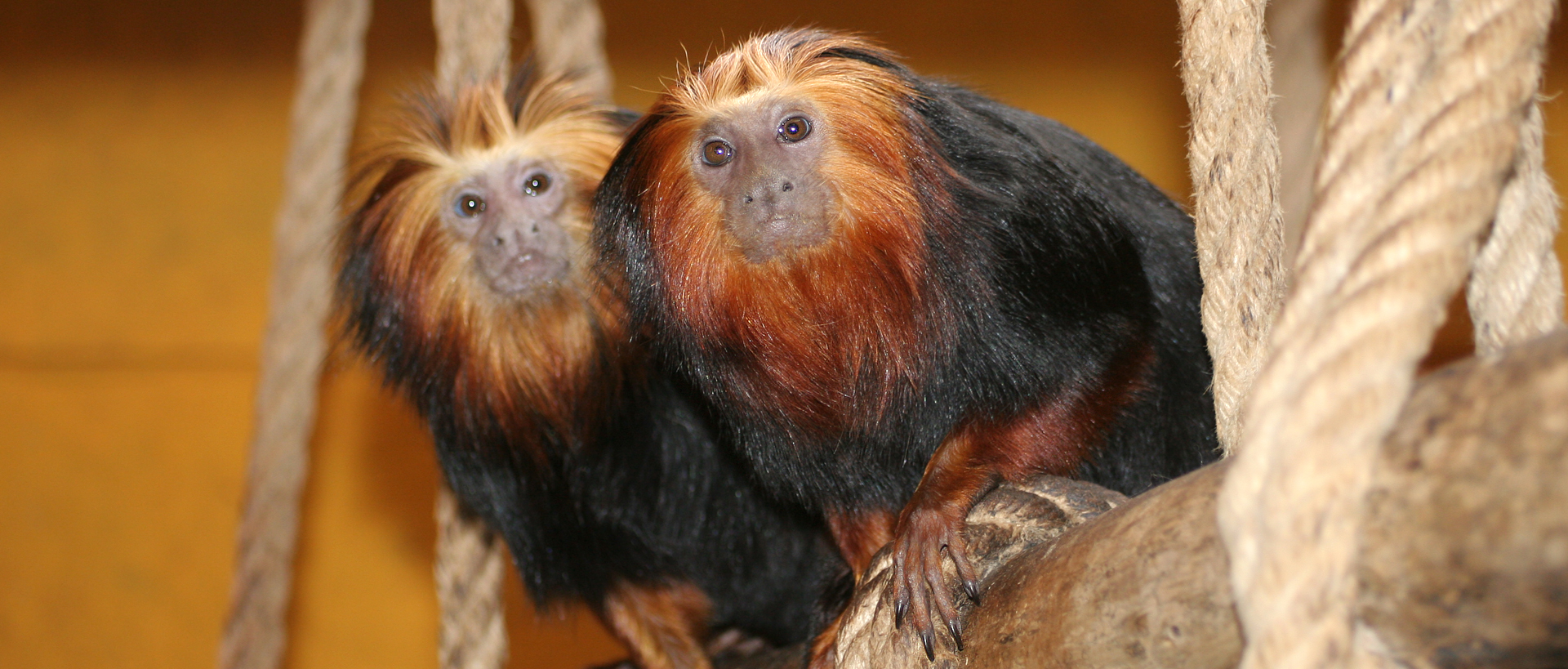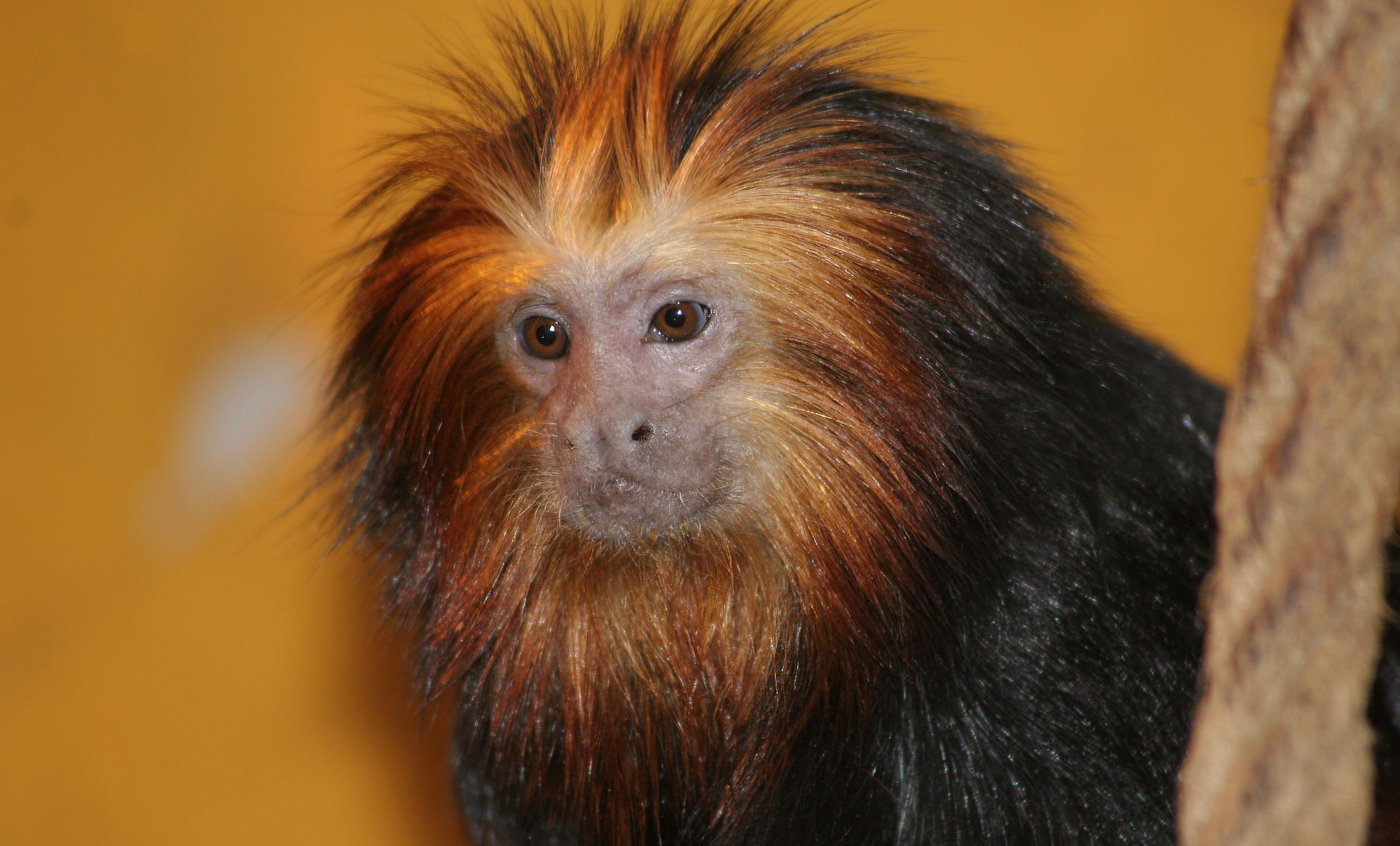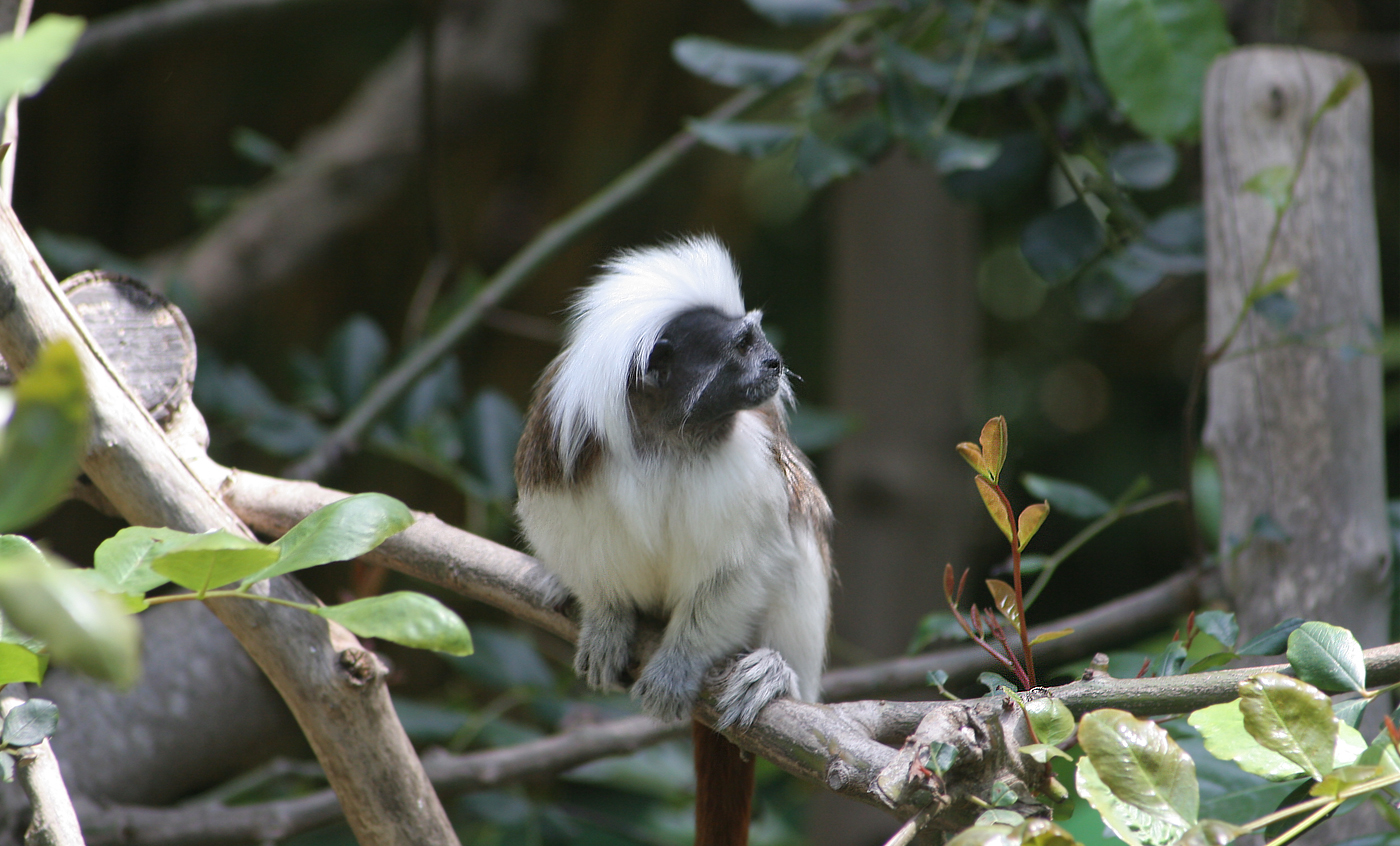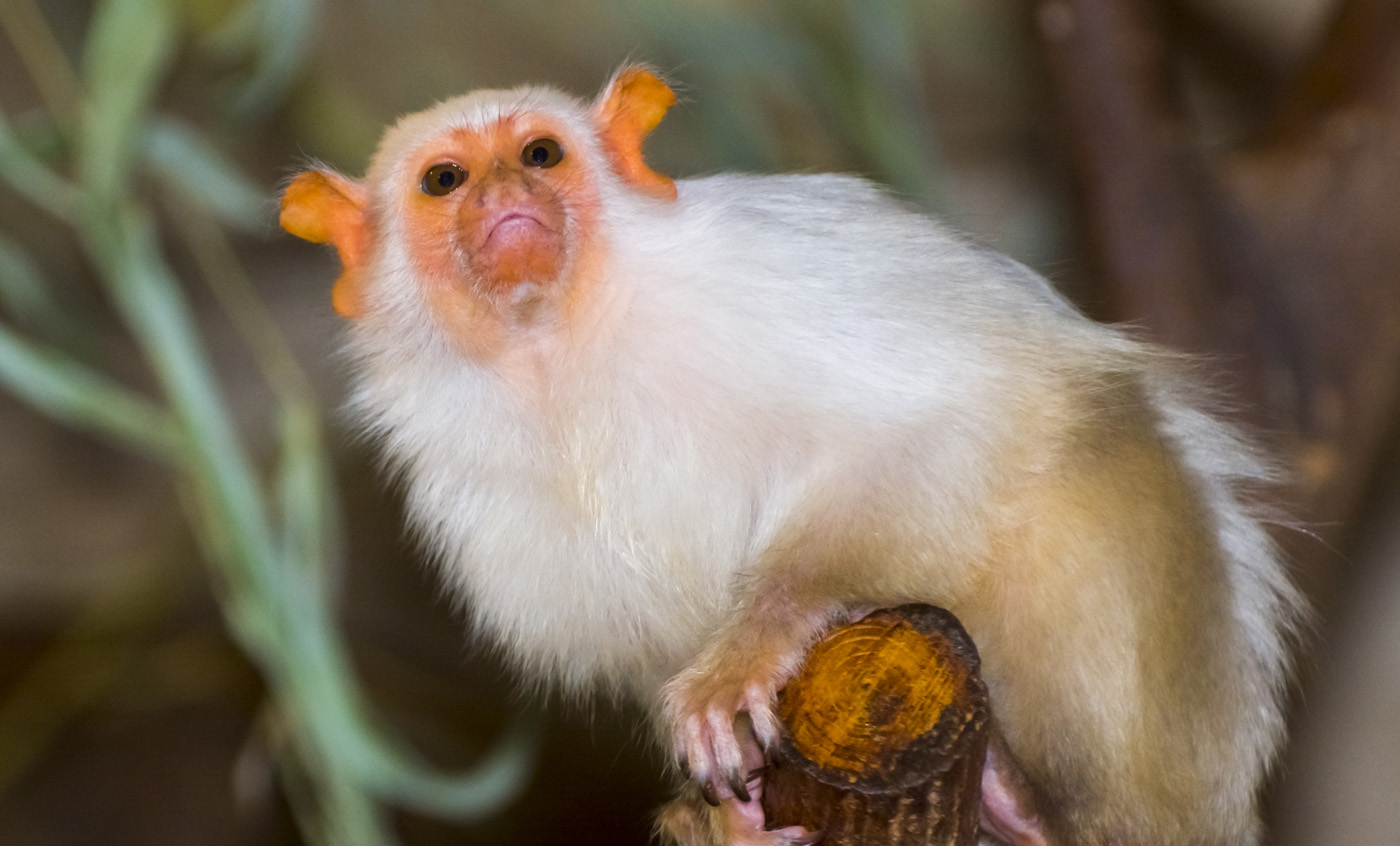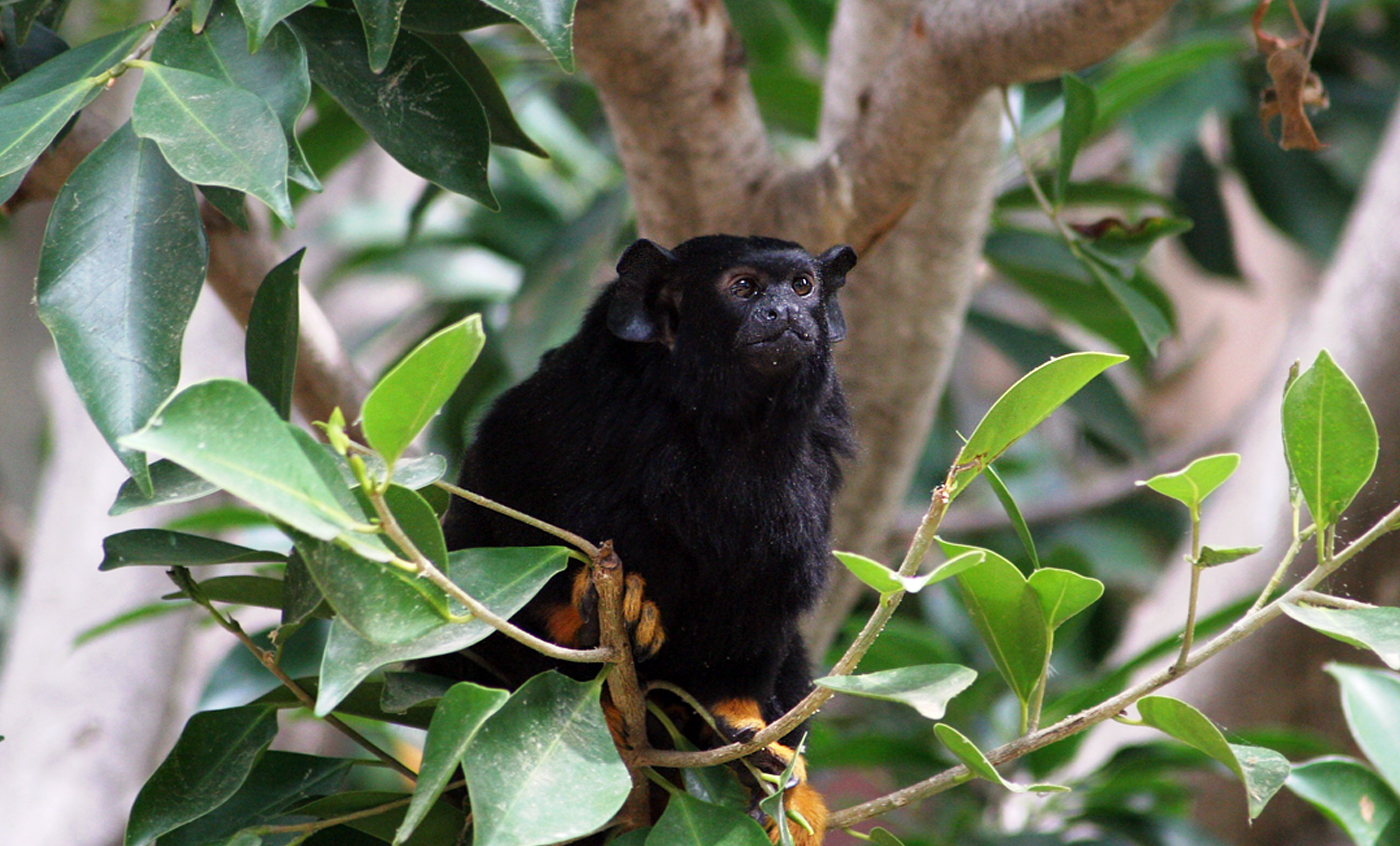Golden-headed lion tamarin
The golden-headed tamarin occupies a small part of the Atlantic rainforest of the state of Bahia, in south-eastern Brazil, although it can also be spotted in dense cocoa plantations within the same region.
Nowadays it is critically endangered as a result of the destruction of rainforests and excessive hunting.
Breeding program
Natural habit
State of Bahia, in the Atlantic coast of south-eastern Brazil.
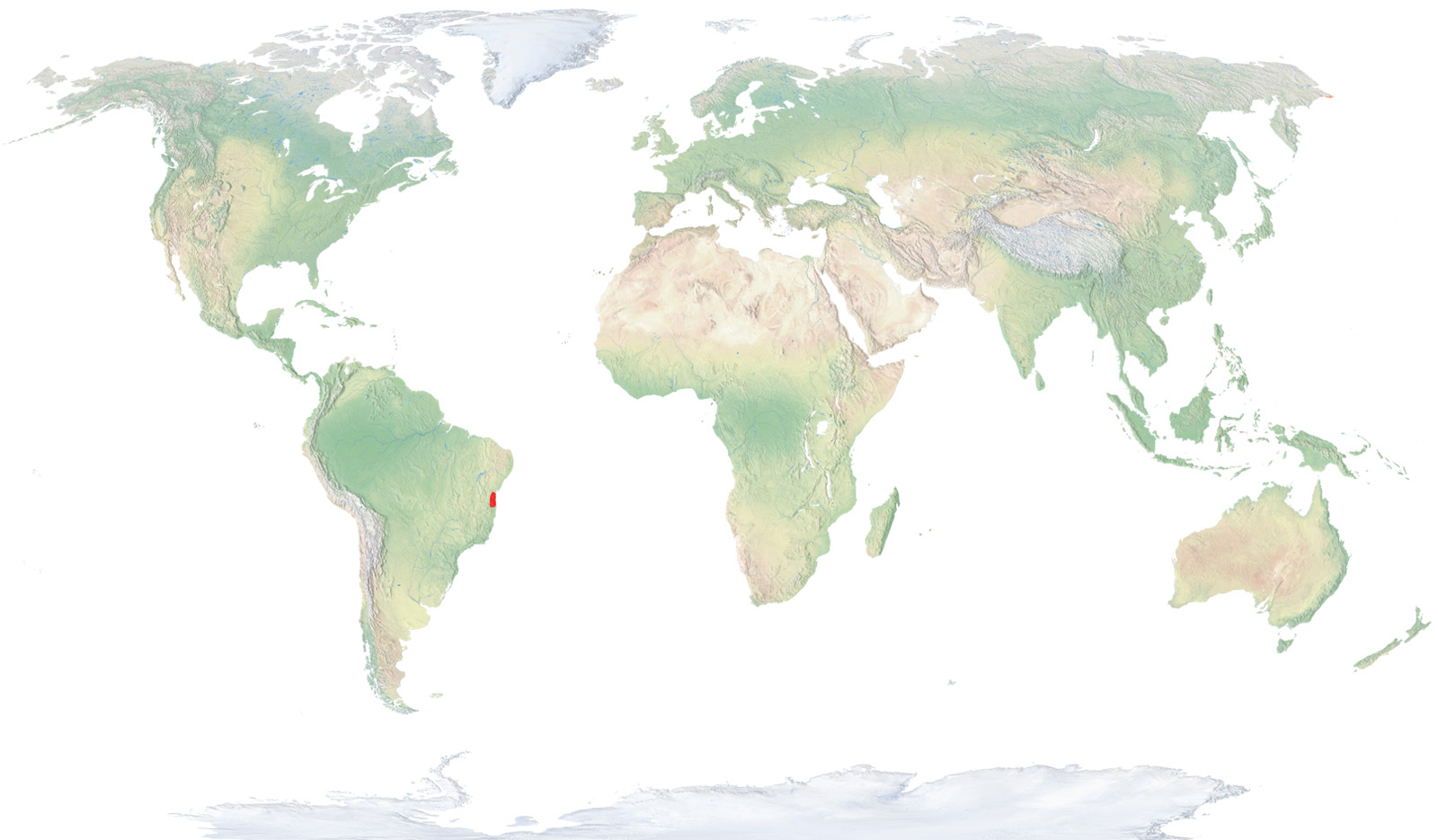
- Distribution / Resident
- Breeding
- Wintering
- Subspecies
Risk level
- Extint
- Extint in the wild
- Critically endangered
- In Danger
- Vulnerable
- Near threatened
- Minor concern
- Insufficient data
- Not evaluated
Taxonomy
Physical characteristics
Biology
Reproduction
Biology
The lion tamarin is named after its prominent mane around its head. In this species, the mane is golden, as well as the tip of the tail and arms, while the rest of the body, tail and face are black.
Rainforests of the Atlantic coast.
Its diet is omnivorous and eats fruits, flowers, nectar and small animals, such as arthropods, worms, snails, frogs, lizards, small snakes and bird eggs.
Usually twins are born, which are looked after cooperatively by all the members of the group, thus reducing the mother’s fatigue and assuring a better chance for the survival of the infant.
It has diurnal and arboreal habits, living in small groups of less than nine individuals, that defend the territory.
It sleeps within holes in big trees, the presence of which constitutes a limitation for the populations, as it affects to the distances it has to travel, in the morning to reach the feeding areas and at night to return.
It has claw-shaped nails that help it grab to the vertical part of trunks and keep stability on small branches. As in the rest of tamarins, it moves on all fours and can jump from tree to tree.
Nowadays it is critically endangered as a result of the destruction of Atlantic rainforests, which have been reduced to small isolated patches.
The Zoo of Barcelona takes part in the EEP of this species.



